Northrop Grumman funds research project with CSUN Faculty
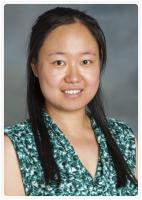 Ruting Jia[/img]
Ruting Jia[/img]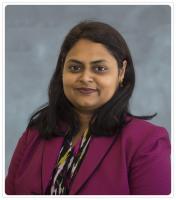 Vidya Nandikolla[/img]Gyros are sensors that tell pilots the degree of rotation in aircraft, and they are key components in numerous aviation instruments, whether a jumbo jet or a drone is flying. In late 2014, Northrop Grumman, which manufactures and sells gyros, contracted with Vidya Nandikolla, assistant professor of mechanical engineering, and Ruting Jia, assistant professor of electrical and computer engineering, to model an inertially stable platform, of the sort on which a camera or telescope might be mounted. Nandikolla and Jia were asked to simulate vibration for the components around the platform to see how the guiders and motors function. The purpose of the project was to gauge the performance of the company’s gyros, in order to be able to demonstrate to customers which ones will work best for different applications. In conducting the cross-disciplinary research, the two faculty members worked with a graduate student who was pursuing a second master’s degree in electrical engineering (he already held a master’s degree in mechanical engineering). The one-year project ended in September 2015.
Vidya Nandikolla[/img]Gyros are sensors that tell pilots the degree of rotation in aircraft, and they are key components in numerous aviation instruments, whether a jumbo jet or a drone is flying. In late 2014, Northrop Grumman, which manufactures and sells gyros, contracted with Vidya Nandikolla, assistant professor of mechanical engineering, and Ruting Jia, assistant professor of electrical and computer engineering, to model an inertially stable platform, of the sort on which a camera or telescope might be mounted. Nandikolla and Jia were asked to simulate vibration for the components around the platform to see how the guiders and motors function. The purpose of the project was to gauge the performance of the company’s gyros, in order to be able to demonstrate to customers which ones will work best for different applications. In conducting the cross-disciplinary research, the two faculty members worked with a graduate student who was pursuing a second master’s degree in electrical engineering (he already held a master’s degree in mechanical engineering). The one-year project ended in September 2015.
NASA delegation visits campus
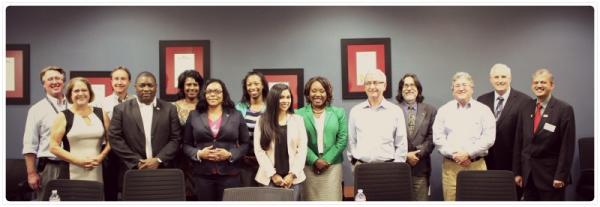 NASA Delegation visit.[/img]For many years, the college’s Honors Co-Op program has been opening doors for high-achieving students by placing them in internships with local companies; often those placements lead to job offers. But last April, the program also opened some doors for the college itself. CECS has been placing Honors Co-Op interns at Aerojet Rocketdyne for four years, and because of the program’s success, when a delegation of small business specialists from NASA’s Marshall Space Flight Center, Armstrong Flight Research Center and Washington, D.C. headquarters visited Southern California, the company invited them to stop at CSUN to tour the campus facilities and meet with CECS dean S. K. Ramesh, Ken Lord, dean of the David Nazarian College of Business and Economics, and Bruno Osorno, the professor of electrical engineering who oversees the Honors Co-Op. Ramesh and Osorno made a presentation about the Honors Co-Op model, and the guests were so impressed that as a consequence of the visit, NASA’s Small Business Office placed CSUN on its nationwide list of recommended campuses for small businesses looking to recruit interns. Four representatives of Aerojet Rocketdyne accompanied the NASA visitors, including Chris Erickson, who sits on the CECS Industry Advisory Board.
NASA Delegation visit.[/img]For many years, the college’s Honors Co-Op program has been opening doors for high-achieving students by placing them in internships with local companies; often those placements lead to job offers. But last April, the program also opened some doors for the college itself. CECS has been placing Honors Co-Op interns at Aerojet Rocketdyne for four years, and because of the program’s success, when a delegation of small business specialists from NASA’s Marshall Space Flight Center, Armstrong Flight Research Center and Washington, D.C. headquarters visited Southern California, the company invited them to stop at CSUN to tour the campus facilities and meet with CECS dean S. K. Ramesh, Ken Lord, dean of the David Nazarian College of Business and Economics, and Bruno Osorno, the professor of electrical engineering who oversees the Honors Co-Op. Ramesh and Osorno made a presentation about the Honors Co-Op model, and the guests were so impressed that as a consequence of the visit, NASA’s Small Business Office placed CSUN on its nationwide list of recommended campuses for small businesses looking to recruit interns. Four representatives of Aerojet Rocketdyne accompanied the NASA visitors, including Chris Erickson, who sits on the CECS Industry Advisory Board.
Ramesh represents CSUN and IEEE around the world
Dean S. K. Ramesh, who has taken on multiple leadership roles within the IEEE, was on the road several times in that capacity between late May and early September last year. In addition to serving on the organization’s Educational Activities Board and as the 2016 president of IEEE-HKN (the electrical engineering honor society), he chaired the 2015 Pre-University Coordinating Committee. He was elected to serve as the 2016 vice president of IEEE educational activities and the IEEE board of directors during elections at the November 2015 IEEE board meeting in New Jersey.
From May 31 to June 4, Ramesh was in Ottawa, Canada, for the annual IEEE International Humanitarian Technology Conference, a meeting for those interested in exploring how technology can be used to address some of the most pressing needs in humanitarian aid and sustainable development. There he delivered a keynote talk on globalization and engineering, with an emphasis on the ways engineers work with assistive technologies.
A month later, on July 31 and August 1, he was in Bogota, Colombia, as part of the IEEE Pre-University Coordinating Committee’s Teacher in Service program (TISP). Using a “train the trainer” model, TISP works with local engineers and K-12 teachers to help them incorporate engineering into the classroom through age-appropriate hands-on lessons. (The engineers serve as resources for the teachers as they implement the lessons.) Ramesh was one of the trainers, leading sessions for about 140 teachers from all over Colombia.
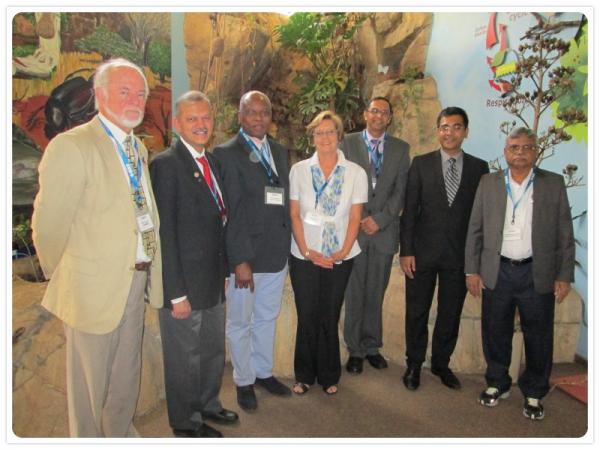 From left: Mike Bruton, exhibition consultant, Mike Bruton Imagineering; Dean Ramesh; Jean Lubuma, dean of Natural and Agricultural Sciences, Rudi Horak, director of Sci-Enza and Sunil Maharaj, dean of the School of Engineering, all from the University of Pretoria; Saurabh Sinha, dean of Engineering and the Built Environment, University of Johannesburg; and Karre Laxminarayana, Shadan College of Engineering and Technology, event planning committee member.[/img]
From left: Mike Bruton, exhibition consultant, Mike Bruton Imagineering; Dean Ramesh; Jean Lubuma, dean of Natural and Agricultural Sciences, Rudi Horak, director of Sci-Enza and Sunil Maharaj, dean of the School of Engineering, all from the University of Pretoria; Saurabh Sinha, dean of Engineering and the Built Environment, University of Johannesburg; and Karre Laxminarayana, Shadan College of Engineering and Technology, event planning committee member.[/img]
From September 2 to 4, he was in Lima, Peru, for a symposium for the Instituto de Calidad y Acreditación de Programas de Computación, Ingeniería y Tecnología (ICACIT), a nonprofit and non-governmental accreditation agency for computing, engineering and engineering technology programs in Latin America. Approximately five years ago, the IEEE began working with Latin American countries to help them create their own local programmatic accreditation in engineering, modeled along the lines of ABET. The ICACIT group comes together annually to examine criteria, and Ramesh led workshops on establishing learning objectives and assessing outcomes.
In October, he was in Pretoria, South Africa, where he led IEEE’s first-ever Exhibits Summit focusing on science centers and museums to develop and implement interactive exhibits to promote STEM education in general and topics from IEEE’s fields of interest.
In his new role as the IEEE vice president for educational activities, Ramesh leads a team of over 100 volunteers and 23 staff members and oversees and coordinates a broad spectrum of programs and activities worldwide, covering pre-university education, university education and continuing education.
Keck Foundation gift anchors new composite manufacturing lab
 [/img]In the classic 1967 film The Graduate, perhaps the best-known line is a single word: “Plastics.” It’s advice a family friend gives recent college graduate Benjamin Braddock, who is uncertain about his future. “There’s a great future in plastics,” the friend assures him.
[/img]In the classic 1967 film The Graduate, perhaps the best-known line is a single word: “Plastics.” It’s advice a family friend gives recent college graduate Benjamin Braddock, who is uncertain about his future. “There’s a great future in plastics,” the friend assures him.
Flash forward nearly 50 years, and the advice could well be “Composites.” Whether it’s the Boeing 787 Dreamliner, the BMW i3, high-end sports cars and race cars, bicycles and even trains, trucks and ships, composite materials increasingly are being used in the transportation industry wherever weight and efficiency are of paramount importance. They are also starting to play a bigger role in biomedical applications, where they may have advantages over traditional materials and be used prosthetically to mimic biological tissues and restore function.
Because the properties of composite materials are substantially different from those of traditional materials such as metals, so are the methods for processing them. Instead of machining, for instance, they may be integrated into molds. They are also impervious to corrosion or rust.
Up to now, the study of composites at CSUN has largely been restricted to graduate-level courses. But a recent grant from the W.M. Keck Foundation will soon be changing that. Last year, the foundation gave the college $300,000 to establish the W. M. Keck Foundation Composite Manufacturing Lab, a multipurpose facility to accommodate undergraduate and graduate students’ projects as well as faculty research.
“Because not all undergraduates end up in graduate school, and composite manufacturing techniques are not taught elsewhere in the undergraduate curriculum, we wanted to create an undergraduate lecture-lab course and give students hands-on experience with these materials in the lab,” explains Hamid Johari, chair of the Department of Mechanical Engineering. “The idea is that they will learn basic theory in the classroom, then go into the lab and work with composite materials to learn about their properties.”
The new undergraduate lecture-lab course has been approved for fall 2016, and the lab’s major piece of equipment, an autoclave, has been ordered and is expected to arrive in the spring. While more equipment will be required to make the lab fully functional, the Keck Foundation’s generosity has laid the groundwork for an entirely new direction for CECS undergraduates. Expect to see more composites in senior design projects—and graduates’ career plans—in the very near future.
Innovation, entrepreneurship are center’s stock-in-trade
Big things are brewing at CSUN’s Ernie Schaeffer Center for Innovation and Entrepreneurship. Taking its name in earnest, the center, which is playing a key role in the California Career Pathways Trust (CCPT) grant, is pursuing several innovative—and potentially influential—projects.
Recently, for example, thanks to a grant from the campus Office of Community Engagement, Shereazad Jimmy Gandhi, the assistant professor of engineering management who heads the center, began transforming his lean manufacturing course into a service-learning class. In partnership with a local nonprofit called New Horizons, which employs people with special needs to carry out simple manufacturing and assembly, students enrolled in the course have been working with the organization to explore ways to improve its processes. 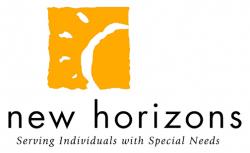 [/img]“My students actually go into the organization and make recommendations to them about how lean principles can be implemented,” Gandhi says.
[/img]“My students actually go into the organization and make recommendations to them about how lean principles can be implemented,” Gandhi says.
In the research arena, the center is exploring aspects of social sustainability and entrepreneurship, and Gandhi is heading an international study investigating how entrepreneurship takes place in nine countries, as well as the factors that lie behind its successes and challenges. “It’s a huge project, and we just finished developing the survey,” he says.
And finally, the center is incorporating the topic of entrepreneurship into the second edition of the American Society of Engineering Management (ASEM) handbook. The handbook is used by industry practitioners, and the ASEM provided grant funding for the center to add the new material. A student is working with Gandhi to carry out the update, which will be finished later in the spring.
All of these initiatives are creating important knowledge, experience and opportunity for students, faculty, industry and the community (in an innovative and entrepreneurial way, of course).
Peggy Nelson, IEEE-HKN induction ceremony
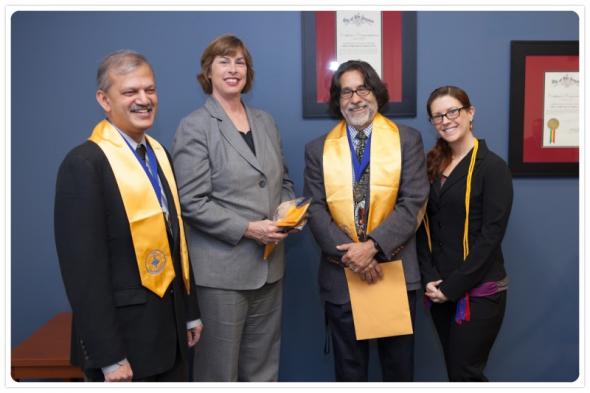 [/img]
[/img]
Last May, a special ceremony was held to induct Industry Advisory Board member Peggy Nelson into the IEEE-HKN (Eta Kappa Nu) honor society. Members of this prestigious electrical engineering organization include students, alumni and other professionals who have demonstrated exceptional academic and professional accomplishments.
